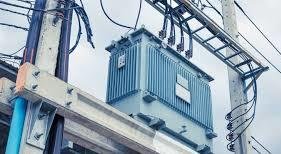Voltage control with transformers involves use of step up or step down transformer to change voltage being transmitted from one value to another.
Voltage control with transformers is an essential aspect of electrical systems. In order to maintain stability and regulate voltage levels, transformers play a pivotal role. This document explores the significance of voltage control with transformers, emphasizing their ability to ensure efficient power distribution and prevent voltage fluctuations. With their transformative capabilities, transformers are indispensable in maintaining a reliable and optimized electrical network.

A transformer is a transfers electrical energy from one circuit to another by mutual induction. It consists of primary and secondary coil where an alternating current is fed into the secondary coil so that some current can be produced in the secondary coil due to magnetic field associated with flowing current.
A transformer is a passive component that transfers electrical energy from one electrical circuit to another circuit by having a varying current in any it’s coils which produces a varying magnetic flux in the transformer’s core inducing induces varying electromotive force (EMF) across any other coils wound around the same core.
Coils of a transformer are wound on a common soft iron core as shown.

Transformers are used to change AC voltage levels, increasing or decreasing it. Voltage control with transformer is easiest with alternating current source. They can also be used to provide galvanic isolation between circuits as well as to couple stages of signal-processing circuits.
The voltage in primary and secondary coils depends on the number of turns of wire on the coil.
Consider the set up below where initially the number of turns in secondary is equal to the number of turns in primary coil.

If the number of turns in the secondary coil is increased, the voltage in the secondary circuit is observed to increase and also the brightness of the bulb increases.
When an alternating current flows in the primary coil, it produces an alternating magnetic flux which links with turns of the secondary coil which then induces electromotive force (e.m.f) in the secondary coil.
The magnitude of the induced e.m.f increases with the number of turns of the secondary coil because an e.m.f is induced in each turn.
depending on the number of turns in secondary coil against the primary coil, we can have step-up or step down transformers
Voltage Control with a step-up transformer
This is a kind of transformer that multiplies voltage fed in primary coil so as to produce much more voltage in secondary coil. It has more turns on the secondary coil than those in primary coil such that the turn ration is greater than one.

since the turn ratio is greater than one, the primary voltage is multiplied by a factor that is greater than one.
The figure below illustrates a step up transformer

The step up transformer is usually represented by the following symbol in diagrams.

Voltage control with transformers: step down transformer
A step down transformer reduces power generating in primary coil. It has more turns in primary coil (Np) than in the secondary coil (Ns) such that the turn ratio is less than one. i.e.

The step down transformer multiplies the voltage in secondary by a factor less than one hence reducing it. It is useful when power supply company need to scale down the voltage transmitted so that it can be used by domestic consumers. The transformer near your homestead is most likely a step down transformer.
In the figure below, a step down transformer is illustrated showing less number of turns in secondary compared to primary coil

The figure below shows transformer symbols we use in books.

Related Topics
- The Lenz’s law
- Direction of current for the induced E.M.F
- Factors affecting magnitude of the induced e.m.f
- Power transmission
- Hans Oersted
- Calculus Integration
- Induced Electromotive force
- Magnetic effect to an electric current


Leave a Reply